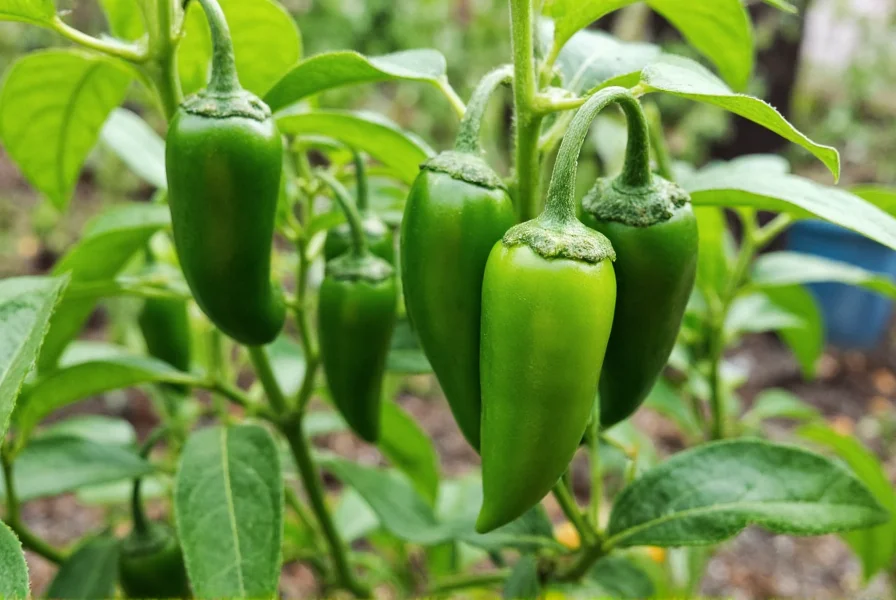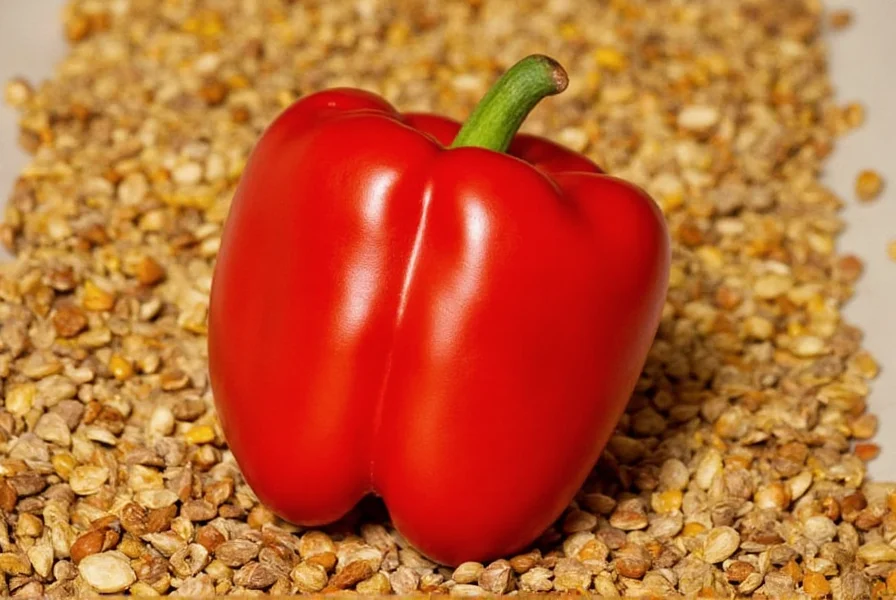When exploring stgt pepper information, it's important to clarify this common spelling confusion. The Serrano pepper (Capsicum annuum) gets its name from the Spanish word "sierra," meaning mountain range, reflecting its native habitat in Mexico's high-altitude regions. Unlike many chili varieties that originated in Central America, Serranos developed specifically in Mexico's mountainous terrain, giving them unique growing requirements and flavor characteristics.
Physical Characteristics of Serrano Peppers
Serrano peppers typically measure 1-4 inches in length with a diameter of about 0.5-1 inch. They grow upright on the plant rather than hanging down, which is distinctive among chili varieties. The peppers transition through color stages from bright green to yellow, orange, red, and eventually dark red or brown when fully mature. Their thin walls make them particularly suitable for pickling and fresh salsas compared to thicker-walled peppers like jalapeños.

Heat Level and Flavor Profile
Understanding the Serrano pepper heat comparison is crucial for culinary applications. At 10,000-23,000 SHU, Serranos are approximately 2-5 times hotter than jalapeños (2,500-8,000 SHU) but significantly milder than habaneros (100,000-350,000 SHU). The heat concentrates in the seeds and white membranes, so removing these reduces spiciness substantially.
The flavor profile features bright, grassy notes with subtle fruitiness that intensifies as the peppers ripen to red. Unlike some hotter varieties that emphasize pure heat, Serranos deliver complex flavor alongside their spiciness, making them versatile in both fresh and cooked applications.
| Pepper Variety | Scoville Heat Units | Relative Heat to Serrano | Common Culinary Uses |
|---|---|---|---|
| Serrano | 10,000-23,000 | 1x (baseline) | Salsas, guacamole, pickled preparations |
| Jalapeño | 2,500-8,000 | 3-4x milder | Stuffed peppers, nachos, poppers |
| Cayenne | 30,000-50,000 | 2-3x hotter | Dried powders, hot sauces |
| Habanero | 100,000-350,000 | 5-15x hotter | Tropical salsas, Caribbean cuisine |
Culinary Applications of Serrano Peppers
When considering how to use stgt peppers (Serranos), their thin walls and bright flavor make them ideal for fresh preparations. Mexican cuisine features them prominently in:
- Pico de gallo - Finely diced raw Serranos add vibrant heat
- Hot sauces - Provide clean heat without overwhelming thickness
- Pickled preparations - Their firm texture holds up well to vinegar brines
- Guacamole - Traditional ingredient for authentic flavor
- Meat marinades - Thin slices penetrate meats effectively
For home cooks exploring Serrano pepper substitutes, jalapeños work for milder applications, while cayenne peppers can substitute when dried. Fresh green Thai chilies offer similar heat with different flavor notes.
Growing Serrano Peppers Successfully
Unlike many chili varieties, Serranos thrive in cooler mountain climates rather than tropical conditions. They require 70-90 days to maturity from transplanting and prefer temperatures between 70-85°F (21-29°C). Gardeners should note these specific growing considerations:
- Start seeds indoors 8-10 weeks before last frost
- Provide full sun but some afternoon shade in extremely hot climates
- Maintain consistent moisture without waterlogging
- Use well-draining soil with pH 6.0-7.0
- Harvest when peppers reach full size and vibrant color

Storage and Preservation Methods
Fresh Serranos maintain quality for 1-2 weeks when stored in the refrigerator's crisper drawer. For longer preservation, consider these effective methods:
- Pickling - The traditional Mexican method using vinegar, garlic, and spices
- Freezing - Whole or sliced peppers freeze well for 6-8 months
- Drying - Creates flavorful dried peppers for grinding into powder
- Oil preservation - Submerging in oil with herbs creates versatile infusions
Nutritional Benefits of Serrano Peppers
Beyond their culinary value, Serranos offer impressive nutritional content per 100g serving:
- 107% of daily vitamin C requirement
- Excellent source of vitamin A (34% DV)
- Good source of vitamin B6 and potassium
- Contains capsaicin, which may boost metabolism
- Negligible calories (just 40 per 100g)
Research suggests regular consumption of chili peppers like Serranos may support cardiovascular health and provide anti-inflammatory benefits, though more studies are needed to confirm these effects.
Common Questions About Serrano Peppers
Why are my Serrano peppers not turning red?
Serrano peppers require sufficient time and proper conditions to ripen fully. They typically stay green for 2-3 weeks after reaching maturity before transitioning through yellow and orange to red. Ensure your plants receive adequate sunlight, consistent watering, and proper nutrients. Some varieties naturally stay green longer than others. Patience is key—allowing peppers to fully ripen on the plant significantly enhances their flavor complexity.
How can I reduce the heat of Serrano peppers in cooking?
To reduce Serrano pepper heat while preserving flavor, remove all seeds and white membranes (placenta), which contain most capsaicin. Soaking sliced peppers in salt water for 15-20 minutes can further reduce heat. Cooking methods also affect spiciness—roasting mellows heat slightly, while boiling removes more capsaicin. For significant heat reduction, substitute half the Serrano with milder peppers like jalapeños while maintaining some authentic flavor.
Can I substitute Serrano peppers for jalapeños in recipes?
Yes, but with important adjustments. Since Serranos are 2-5 times hotter than jalapeños, use approximately half the amount when substituting. For example, if a recipe calls for two jalapeños, use one Serrano. Consider removing seeds and membranes from the Serrano to better match jalapeño heat levels. Remember that Serranos have a brighter, grassier flavor profile compared to jalapeños' earthier notes, which will subtly change the dish's character.
What's the best way to handle Serrano peppers safely?
Always wear gloves when handling Serrano peppers, especially when cutting or seeding them. The capsaicin can transfer to skin and cause irritation, particularly if you touch your eyes or face. Work in a well-ventilated area as cutting releases capsaicin vapors. After handling, wash hands thoroughly with soap and water—avoid using퀵 hand sanitizers as alcohol can spread capsaicin. Never touch your face while preparing hot peppers, and consider using safety glasses for extra protection against airborne particles.
How do I know when Serrano peppers are ripe and ready to harvest?
Serrano peppers are ready for harvest when they reach 1-4 inches in length with firm, glossy skin. Green Serranos should be uniformly bright green without yellowing. For colored varieties, watch for the specific color transition—yellow, orange, or red depending on the cultivar. The peppers should feel heavy for their size and detach easily with a gentle twist. Harvesting earlier yields greener, brighter-flavored peppers, while allowing them to fully ripen produces sweeter, more complex flavors with slightly higher heat.











 浙公网安备
33010002000092号
浙公网安备
33010002000092号 浙B2-20120091-4
浙B2-20120091-4